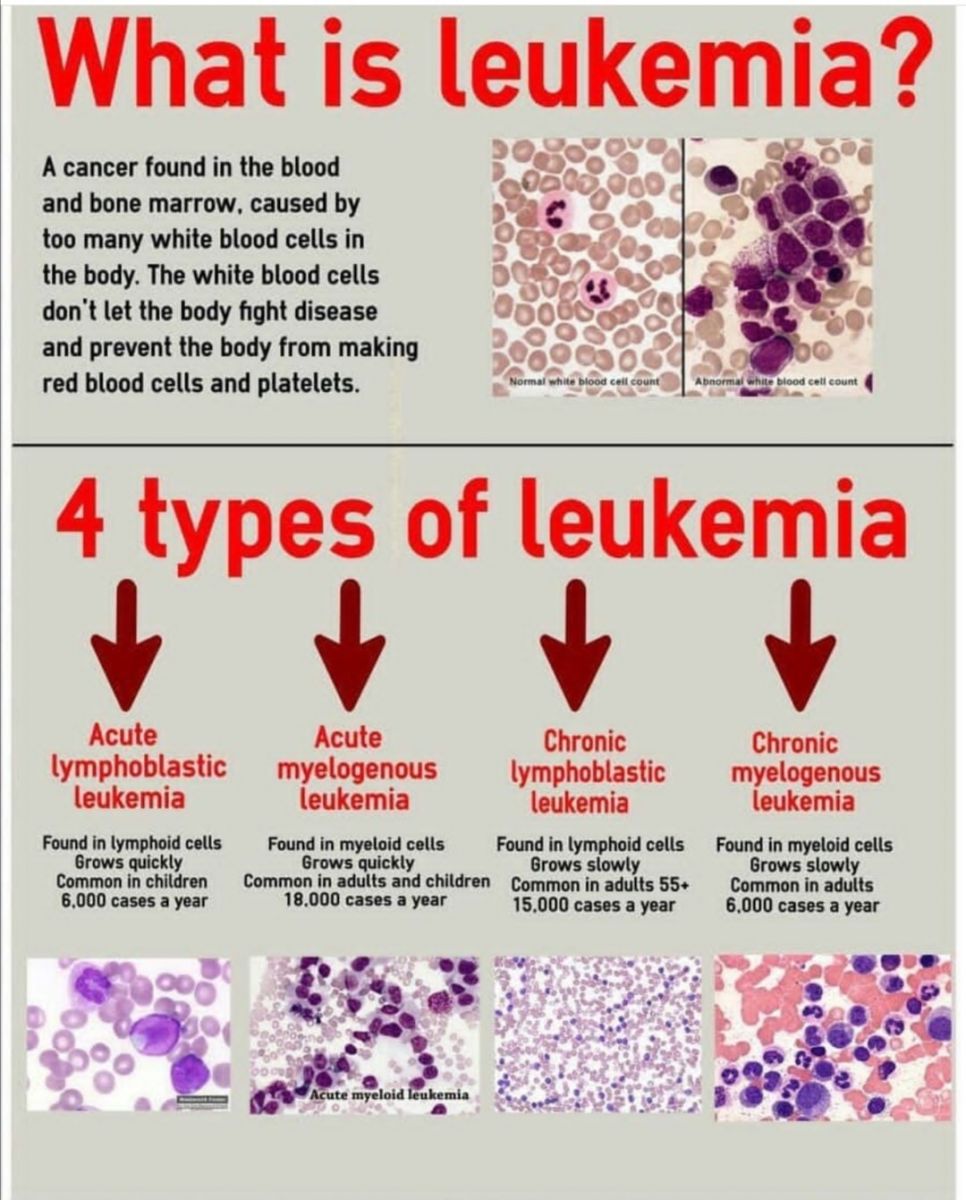Leukemia is cancer of the body's blood-forming tissues, including the bone marrow and the lymphatic system.
Many types of leukemia exist. Some forms of leukemia are more common in children. Other forms of leukemia occur mostly in adults.
Leukemia usually involves the white blood cells. Your white blood cells are potent infection fighters — they normally grow and divide in an orderly way, as your body needs them. But in people with leukemia, the bone marrow produces abnormal white blood cells, which don't function properly.
Symptoms
Leukemia symptoms vary, depending on the type of leukemia. Common leukemia signs and symptoms include:
- Fever or chills
- Persistent fatigue, weakness
- Frequent or severe infections
- Losing weight without trying
- Swollen lymph nodes, enlarged liver or spleen
- Easy bleeding or bruising
- Recurrent nosebleeds
- Tiny red spots in your skin (petechiae)
- Excessive sweating, especially at night
- Bone pain or tenderness
There are 4 main types of leukemia, based on whether they are acute or chronic, and myeloid or lymphocytic:
Acute myeloid (or myelogenous) leukemia (AML)
Chronic myeloid (or myelogenous) leukemia (CML)
Acute lymphocytic (or lymphoblastic) leukemia (ALL)
Chronic lymphocytic leukemia (CLL)
When to see a doctor
Make an appointment with your doctor if you have any persistent signs or symptoms that worry you.
Leukemia symptoms are often vague and not specific. You may overlook early leukemia symptoms because they may resemble symptoms of the flu and other common illnesses.
Rarely, leukemia may be discovered during blood tests for some other condition.

